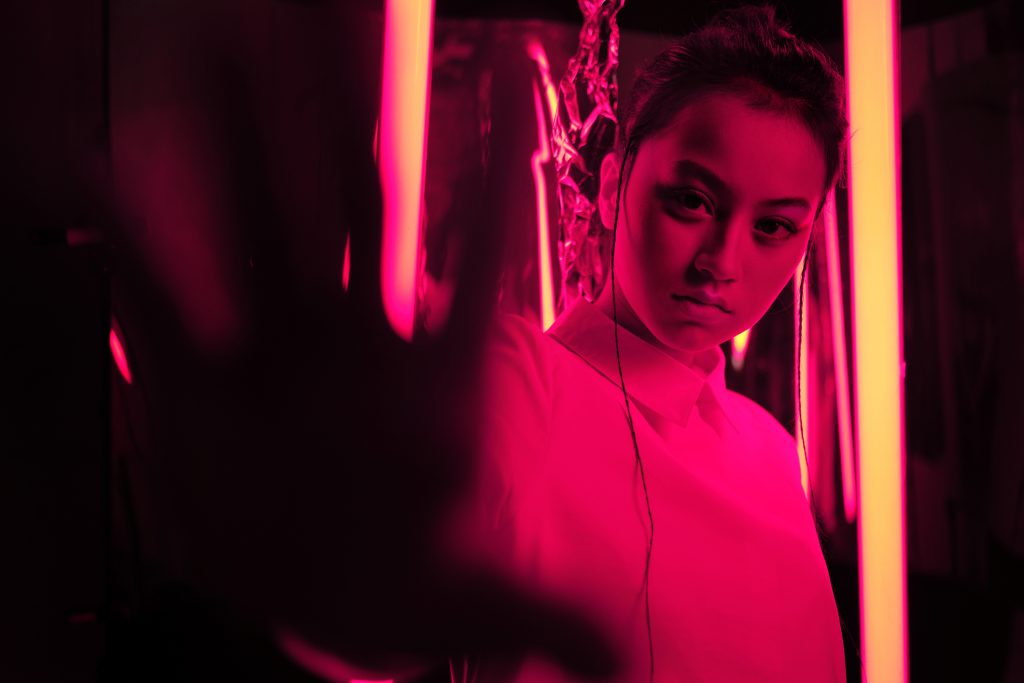Fans of HBO’s popular dystopian series “Westworld” are likely familiar with the Uncanny Valley Theory, which describes the unsettling feeling humans get in response to humanoid robots or hyper-realistic computer-generated characters. While the fantasy and technology the show portrays is thankfully not yet upon us, something a bit similar is in the marketing world – the virtual influencer. They are “real,” and they are convincing thanks to AI and machine learning.
There are currently approximately 150 virtual influencers and growing, ranging from brand-specific influencers, such as KFC’s virtual Colonel Sanders, to those that team with multiple brands, such as Lil Miquela, one of the first AI influencers developed who has partnered with Coachella, Dior and Prada and is repped by CAA.
This goes far beyond the comical and obviously fake Max Headroom selling Coca-Cola in the 1980s on MTV and presents an area of great opportunity for brands eager to use influencer to garner attention in a crowded market and social media age.
But like IRL, there are pros and cons in the virtual influencer world.
Benefits
Brands that use virtual influencers instead of in-real-life (IRL) influencers enjoy more control and creative freedom over content and its many aspects. This means limitless, custom creative opportunities. For example, in 2020, Miquela had a human boyfriend, Nick Killian. They ultimately broke up, and soon after she released a break-up single called “Speak Up.” Of course, like IRL relationships, they later decided to try again and recently got back together; and unsurprisingly, Miquela has released another single, “Masterpiece.” And just like IRL influencers, she doesn’t shy away from publicity – she actively seeks it and uses her “life’s” events to promote herself as another influencer would from a brand perspective. 1
Virtual influencers are 100% brand safe, so there are no concerns about quality of content, frequency of content and delivering content on time. You won’t catch them in an unflattering paparazzi moment or posting something uncomplimentary on social media, and they can be activated when, where and how a brand wants them to. But real or not, these influencers should also be on-brand and have the same value properties as the brand, while offering loyalty, exclusivity and brand affinity to the partnership or campaign.
Scheduling is also no longer a factor, because a travel calendar or availability are never issues with virtual influencers. They have no ego or social life, making them on-call 24/7 and 365 days a year with no human attitude or push-back.
They have the potential to reach younger GenZennials and GenZ demographic, and they are more accepting of the digital ecosystem. They help slip a brand more organically into the Metaverse. Brands can cross an IRL influencer into the Metaverse with a virtual influencer, supporting the authenticity of the virtual influencer while introducing the IRL influencer into a fully digital ecosystem.
And as Forbes noted recently, they can have up to three times higher engagement rates than IRL influencers.
Drawbacks
But there’s that pesky Uncanny Valley. Virtual may not feel “authentic.” Even with 5.9 million Instagram followers, some feel the most popular AI influencer Lu do Magalu doesn’t look as “real” as other AI influencers out there. And the threat of deep fakes further clouds the picture.
Virtual influencers also might not have imperfections or be relatable, adding to insecurities in young followers. But while virtual influencers have been criticized for their perfectionism, so have IRL creators, leaving the door open for virtual influencers to socially share some of their more imperfect moments and make them more relatable or “real.”
And finally, virtual influencers are potentially cost prohibitive. Some brands might not be able to afford the price tag for one Instagram post from virtual influencers, which tend to fall into celebrity influencer pricing and fees. In 2020 alone, virtual influencer Miquela made $11.7 million for her influencer and modeling work.
As IRL goes, so goes virtual influencing

Clients have come to us seeking to plant a flag in the metaverse, where GenZ and GenZennials are comfortable transacting, playing and living. These demographics aren’t like their Gen X and baby boomer friends and family, who were more receptive to marketing on television or in print. Brands can, and should, use virtual influencer as a gateway to this rapidly developing digital space in the metaverse.
But brands need to understand that when partnering with an AI influencer, they will blur the line between reality and fantasy to some degree, even though we’re not yet at a “Westworld”-level dystopia. So, they should approach virtual influencers as they would an IRL creator. For authentic brand partnerships, campaigns, awareness and messaging, brands must ensure its consumers and social audience fully understand the virtual influencer is exactly that – not a real human or animal